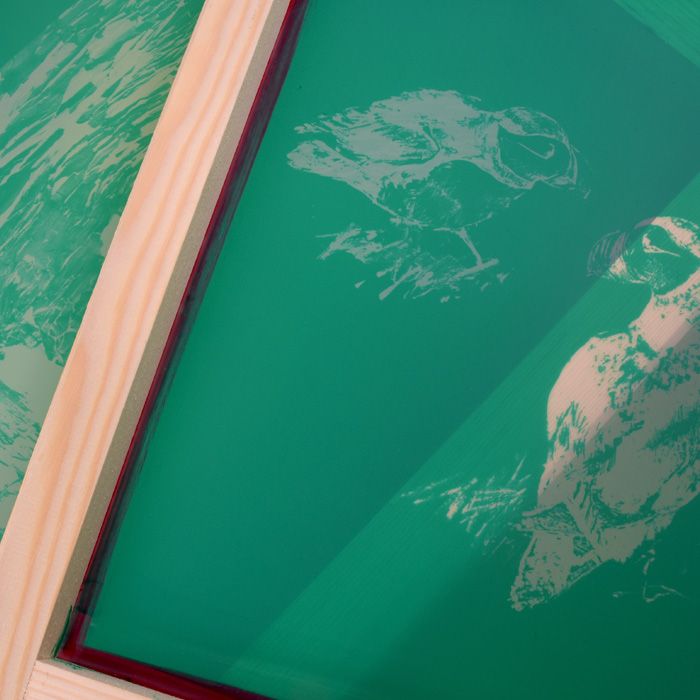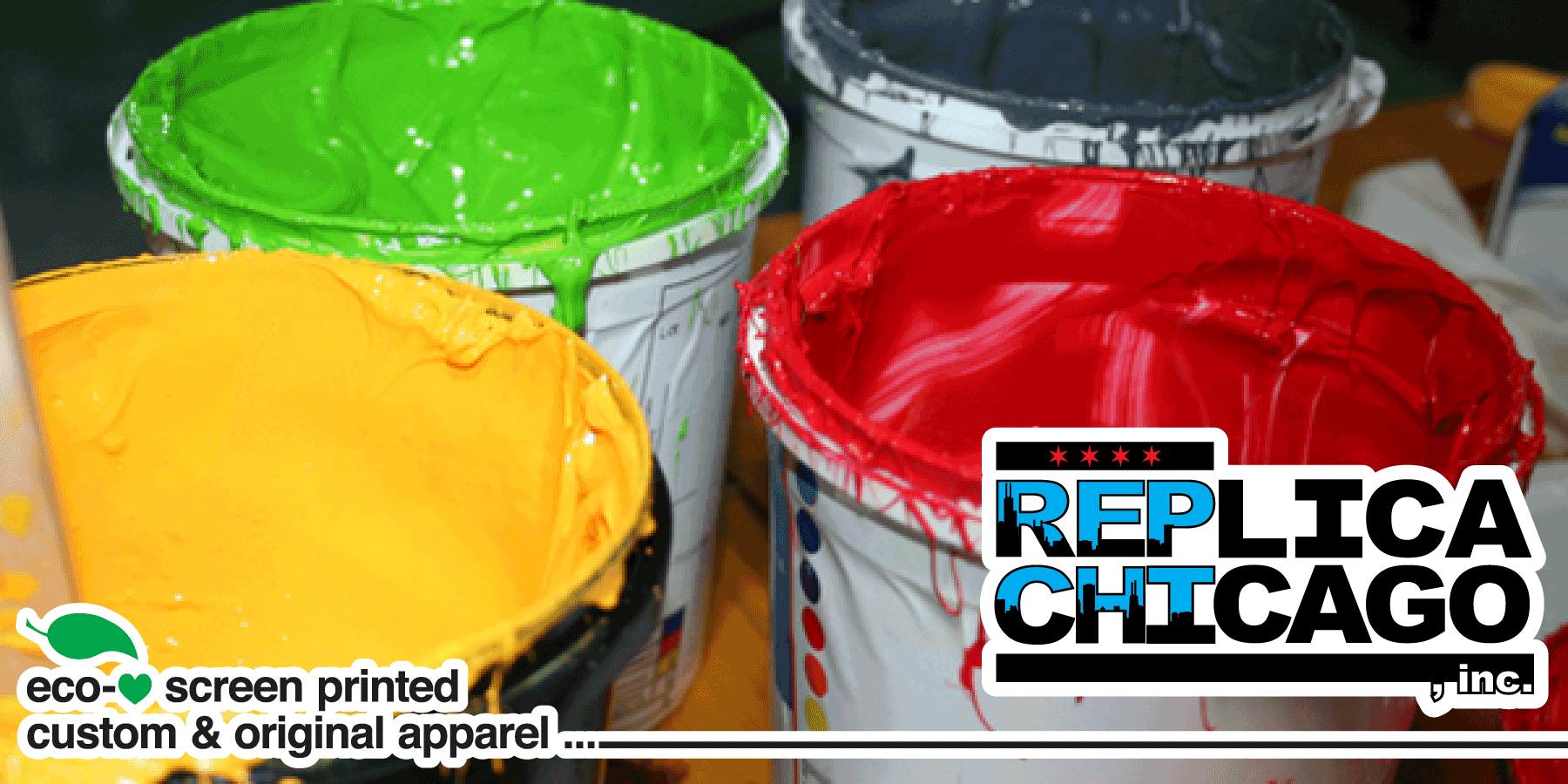Affordable Custom Screen Printing Services for Small Businesses
Affordable Custom Screen Printing Services for Small Businesses
Blog Article
Display Printing Uncovered: Everything You Need to Learn About Tee and Garment Printing Strategies
If you have actually ever before asked yourself how those lively designs wind up on your favored tee shirts, you're in the ideal place. Display printing is a fascinating method that combines art with technique, providing countless possibilities for creativity. Comprehending the basics, from devices to ink selections, can greatly affect your results. All set to discover the vital aspects that make screen printing an art kind? Let's reveal the information that can boost your jobs.
The Basics of Screen Printing: Exactly How It Functions
When you dive right into display printing, you'll discover it's both an art and a science. At its core, display printing involves creating a stencil, or screen, that enables ink to pass via just in certain locations (screen printing kit). You start by selecting your layout and preparing your screen with a light-sensitive emulsion. When you expose this emulsion to light, it solidifies, leaving your design as an unfavorable area.
Position the screen over the fabric, after that use a squeegee to push ink with the screen onto the garment. Each action is crucial, and grasping them will certainly elevate your display printing skills, transforming easy garments into one-of-a-kind, meaningful pieces.
Types of Display Printing Strategies
As soon as you grasp the basics of display printing, it's time to explore the different strategies that can boost your designs. One popular approach is standard display printing, where ink is pushed via a stenciled display. This strategy is great for strong, lively shades. There's water-based ink printing, which uses a softer feel and is green, however it needs a different technique to healing.
An additional option is plastisol printing, known for its resilience and brilliant colors, making it a preferred for many brands. Experiment with halftone printing to develop gradient effects and detailed layouts.
Essential Tools for Display Printing
To achieve sensational outcomes in display printing, having the right tools is essential. You'll require a tough screen printing frame, which holds the mesh that transfers your design onto the garment. Next, invest in top quality squeegees; these are necessary for using ink equally throughout the screen.
Selecting the Right Inks and Products
When selecting inks and materials for screen printing, you require to take into consideration the kind of ink that functions finest for your project. Consider textile compatibility to ensure your styles look terrific and last lengthy. Check out eco-friendly ink choices to make your printing process a lot more sustainable.
Sorts Of Display Inks
Selecting the right screen ink is crucial for attaining vivid, long lasting prints that fulfill your project's needs. There are a number of types of display inks to take a look at. Specialty inks, such as metal or glow-in-the-dark, can include distinct results to your styles.

Fabric Compatibility Factors To Consider
Recognizing fabric compatibility is essential for accomplishing premium screen prints, particularly given that different materials react distinctly to numerous inks. When selecting inks, take into consideration the textile type-- cotton, polyester, or blends. For cotton, water-based inks function well, using soft qualities and breathability. Polyester, on the other hand, often needs plastisol inks for far better bond and vibrant colors. If you're publishing on blends, you could require to use a combination of both kinds. Always evaluate your inks on example textile to guarantee they adhere correctly and keep color integrity. Additionally, maintain in mind that textile weight and appearance can affect the last end result, so picking the best ink and material combo is essential for your job's success.
Eco-Friendly Ink Options
Eco-friendly inks are ending up being a prominent selection for screen printers that desire to lessen their environmental impact while keeping high quality. When picking inks, think about water-based inks, which are less damaging and less complicated to clean up contrasted to conventional solvents. These inks bond well with materials, supplying lively results without toxic chemicals. You may also explore eco-solvent inks that use less volatile natural compounds (VOCs), making them a much safer alternative for both your wellness and the planet.
In addition, look for inks made from sustainable resources, such as soy or vegetable-based options. By selecting the ideal inks and products, you'll not just produce sensational styles but likewise add to an extra sustainable printing procedure. Make the switch, and your prints will reflect your commitment to the setting!
Preparing Your Design for Display Printing

Submit Layout Requirements
To assure your style looks dynamic and sharp on fabric, you'll need to pay close attention to file style requirements for screen printing. Beginning with vector documents like AI or EPS, as they can be scaled without losing top quality. If you make use of raster photos, select high-resolution data, such as TIFF or PNG, ideally at 300 DPI. Avoid using JPEGs, as they can shed clearness when resized. Make sure your design has a transparent history to protect against undesirable white edges on your prints. Keep shade modes in mind; CMYK is conventional for display printing, so transform your RGB creates appropriately - screen printing kit. By following these standards, you'll set your art work up for an effective print.
Shade Splitting Up Methods
Shade separation is an essential action in preparing your style for display printing, and understanding it can substantially improve your print high quality. You'll require to damage your style right into private shades, as each shade requires a different display throughout printing. Beginning by recognizing all the shades in your style and produce layers for each one. You can utilize software program like Adobe Photoshop or Illustrator to isolate and separate colors properly. Be certain to conserve each layer as a different documents, generally in a style like TIFF or PSD. This accuracy not only guarantees accurate shade depiction however additionally improves the printing process. By taking note of shade splitting up, you'll attain dynamic and professional cause your screen-printed garments.
Resolution and Dimension
Achieving the ideal results in display printing starts with ensuring your layout has the right resolution and dimension. Preferably, your art work must go to the very least 300 DPI (dots per inch) for sharp, clear prints. If you use lower resolution, your end product may look unprofessional and pixelated.
When it comes to dimension, consider the dimensions of your print area. Style your art work to match the final print dimension, preferably developing it in the actual dimensions you'll be printing. In this manner, you'll stay clear of any kind of unexpected scaling issues.
Always examine your style in both vector and raster layouts. Vector graphics can be scaled without losing top quality, making them optimal for screen printing. Preparing appropriately will guarantee your layout looks impressive on every garment!
Step-by-Step Screen Printing Refine
Screen printing is a vibrant procedure that permits you to create dynamic designs on numerous surface areas. To obtain begun, you'll require a screen, emulsion, and your selected ink.
After washing out the unexposed emulsion, your screen prepares. Establish it up on your printing surface area and align your garment under it. Pour ink onto find more info the display and use a squeegee to press click to find out more the ink with the stencil onto the fabric. Lift the display thoroughly and allow the print completely dry. Cure the ink making use of heat to assure resilience. That's it! You've successfully display published your layout.
Tips for Effective Display Printing Projects
While you're diving right into your screen printing projects, bear in mind that preparation is essential to success. Start by collecting all your products-- inks, garments, mops, and displays. A clean work area aids stop unwanted errors, so clean prior to you start.
Next, validate your art work is high-resolution and correctly sized for your garment. Examine your screen for correct direct exposure and tidy it completely to prevent spots. When blending your inks, comply with the maker's guidelines to achieve the appropriate uniformity.
During printing, apply also stress with your squeegee for constant outcomes. Don't rush; take your time to confirm each print meets your criteria. After printing, let your garments dry totally prior to taking care of or packaging them.
Finally, always keep a sample of your benefit future reference. In this manner, you can assess your development and enhance your strategies over time. Delighted printing!

Regularly Asked Questions
How much time Does It Take to Set up a Display Printing Job?
Establishing up a screen printing work usually takes about half an hour to an hour. You'll prepare the displays, mix inks, and change the press. The time varies based on complexity and experience, so remain organized!
Can I Print on Various Material Enters Making Use Of the Very Same Strategy?
Yes, you can publish on various fabric types making use of the same technique, however you'll need to adjust your setups and inks. Some fabrics absorb ink in different ways, so trying out guarantees the very best results for every product.
What Are Usual Mistakes to Prevent in Screen Printing?
When display printing, stay clear of common mistakes like utilizing the incorrect ink, ignoring appropriate exposure times, or skipping pre-press checks. Constantly examine your configuration and keep tidy screens to guarantee top quality outcomes each time.
How Can I Effectively Clean and Preserve My Screen Printing Tools?
To correctly tidy and maintain your display printing tools, you need to on a regular basis clean displays with ideal solvents, examine squeegees for wear, and ensure all devices are stored completely dry and dust-free. Uniformity boosts and prevents expensive fixings performance.
Is Screen Printing Eco-friendly Contrasted to Other Approaches?
Screen printing can be a lot more environmentally pleasant than other techniques, particularly if you make use of eco-conscious products and water-based inks. By picking lasting materials and methods, you lower waste and minimize your influence on the earth.
Display Printing Uncovered: Every Little Thing You Need to Know Regarding T-Shirt and Garment Printing Strategies
At its core, screen printing entails developing a stencil, or screen, that enables ink to pass via just in specific areas. Setting the screen over the material, after that utilize a squeegee to press ink via the you can try these out display onto the garment. One preferred method is conventional screen printing, where ink is pushed through a stenciled screen.When choosing inks and materials for display printing, you require to take right into account the kind of ink that works best for your job.
Report this page